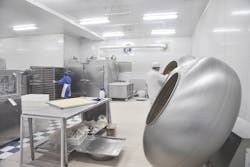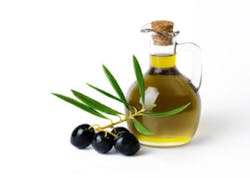Wastewater treatment challenges in food processing and agriculture
Wastewater generated from food production and agricultural activities is a major source of environmental pollution. It is also among the most difficult and costly waste to manage because food processing wastewater can contain large quantities of nutrients, organic carbon, nitrogenous organics, inorganics, suspended and dissolved solids, and it has high biochemical and chemical oxygen demands. It must be treated to levels that will not damage receiving waters due to excessive nutrients or oxygen demand when directly discharged or will not disrupt publicly owned treatment works (POTWs) when discharged to sewers. In the U.S., it is subject to effluent guidelines requirements and National Pollutant Discharge Elimination System (NPDES) permits. Plant-food processing wastes may be lower strength and greater volume than animal processing and animal production.
“Each type of food processing wastewater will have special factors to consider, and in addition to the technology performance issues, seasonality of production adds to the complexities of the treatment choices and operations in several industries.”
The range of food and agricultural wastes present different challenges. Industry examples include: meat and poultry products, dairy products, fruits and vegetables for canning and preserving, grain products, sugar and related confectionaries, fats and oils, and beverages and brewing, among others. Biochemical oxygen demand (BOD) and chemical oxygen demand (COD) values for many wastes are in the thousands of milligrams per liter, and some like cheese production, winery and olive milling can be in the tens of thousands for COD. So, each waste type will have special factors to consider, and in addition to the technology performance issues, seasonality of production adds to the complexities of the treatment choices and operations in several industries.
Treatment technologies for food processing wastewater
The types of treatment technologies used for food processing wastewater are not unusual among wastewater treatment options and include the typical array of biological and physical chemical treatments. Both oxidative and anaerobic processes may be employed. They include: flotation, coagulation, sedimentation, filtration, adsorption, membranes, primary settling, secondary activated sludge, anaerobic digestion and even recovery of carbon dioxide or methane for subsequent uses. In addition, many wastes or treated residues are amenable for land application as beneficial soil amendments or fertilizers, which can mitigate much of the wastewater discharge concerns; however, even those approaches can be problematic if excessive nutrient runoff occurs, particularly in cold weather.
"The safety of the food product is paramount, and recycling within a process step can be allowed by law for certain food processes, such as chiller water in meat and poultry processing."
In-plant recycling can also be employed since water is in demand for not only processing steps, but also for cleaning equipment, facilities and floors. Detergents or other additives may be employed for those nonfood contact applications, which may improve or complicate the subsequent treatment processes. The safety of the food product is paramount, and recycling within a process step can be allowed by law for certain food processes, such as chiller water in meat and poultry processing. Recycling where food contact is involved is more problematic between processes because different contaminants may be contributed.
Fruit and vegetable processing
Many of the aforementioned treatment processes are used in vegetable and food processing wastewater. The production process produces waste streams from washing and rinsing, sorting, in-plant fluid transport methods, peeling, pureeing and juicing, blanching, canning, drying, cooking and cleanup. Most of the waste content is biodegradable carbohydrates, although salts may also be a contributor for some such as brining products.
Fishing industry
There are many elements of production of fish products that generate solid and liquid wastes. Harvested product may be processed on shipboard or stored by icing or freezing for transport to the processing plant. Farmed product may be handled somewhat differently from wild-caught product. Wastes from eviscerating and butchering are collected, dried or screened and used as byproducts. The processing plant may further trim from the product and then cook, pack or freeze, generating other waste liquids and solids. Each type of product generates different levels of BOD, COD and often substantial amounts of fats, oils and grease and protein content.
Meat and poultry industries
Wastes from the meat and poultry industries include those generated by the animals during livestock holding as well as high-strength wastes produced during processing. Processes include: slaughtering, defeathering or hide removal, eviscerating and trimming, washing, disinfecting and cooling. Some poultry plants may process 2 million birds per week, so they are large-scale waste generators. Nitrogenous organic (proteins), fats and inorganic (nitrates) waste components are substantial.
Dairy production
The two main elements are milk bottling and milk product production of whey, butter, cheese, ice cream, yogurts, cottage cheese and other milk derivatives. The latter post-milk processing is the largest contributor to wastewater production and to the strength of the wastewater. The COD levels at those stages, especially in cheese production, can be much more than 10 times the amount in milk bottling. Nondairy ingredients such as flavors, sugars and fruits are also involved in production, and they can contribute to the waste stream. The waste products are mainly biodegradable, so aerobic and anaerobic processes are standard.
Freila/iStock
Oil and fat processing
Vegetable oil and animal fat production often involves solvent extraction or compression for olive and sesame oils. The oils must have further refining processes to remove some taste, free fatty acids and other residue components from the extracted oils and fats. Substantial amounts of solid residues are also generated from the vegetable oil production. In addition, extraction solvents must be removed. Olive oil production generates higher levels of COD and solid wastes compared to other food and agricultural wastes.
Anaerobic treatment for food processing wastewater
Anaerobic technologies are a growing area of interest in agricultural and food processing wastewater treatment because of the opportunity to generate methane gas as a byproduct, which can be used to generate heat and electrical energy to offset facility operating costs, and it reduces the biological activity and the volume of waste and the carbon footprint. Anaerobic processes are often relatively slow and temperature sensitive, and they require larger facilities, so the goal is to develop processes that are more rapid to optimize throughput and methane production. Anaerobic methane and energy production are also being more commonly used in municipal waste treatment plants to provide heat and electricity. The upfront investments are substantial, and they require more sophisticated operations management, but they are providing POTWs with longer-term insulation from increasing energy costs. Food wastes are even used to supplement POTW waste to increase methane and energy production.
"Food and agricultural wastes are ideal for biogas production due to the relatively high total organic carbon loadings compared to many other wastes."
Food and agricultural wastes are ideal for biogas production due to the relatively high total organic carbon loadings compared to many other wastes. For example, a large municipal plant in Washington, D.C., obtains about one-third of its electricity needs using its Cambi thermal hydrolysis, advanced anaerobic digestion and biogas process. Also, an Oakland, California, facility, which is likely a recipient of substantial food-processing wastes, is reported to produce excess electricity that it can sell to the grid.
High-rate anaerobic digesters are attracting interest because of their higher loading capacities and lower sludge production. They can include: anaerobic filters, upflow anaerobic sludge blanket reactors, baffled fluidized beds, granular sludge beds, sequencing batch reactors and hybrid/hybrid upflow sludge blanket reactors. An important consideration is the presence of granular support media that provide an enlarged surface area, which provides enhanced contact between the active microbial species on the surface and carbonaceous material and nutrients in the wastewater. Refractory waste materials can become more biologically available and more productive by use of appropriate pretreatments. There is also exploration of inoculating with anammox bacteria to accelerate conversion of nitrogenous materials. Some POTWs are using these to improve the efficiency and reduce costs of traditional nitrification/denitrification processes.
Conclusion
Discharges of food and agricultural wastes are a significant contributor to nutrient and carbonaceous and nitrogenous waste discharges. Treatment of agricultural and food processing wastewater is complex and costly because of the contaminant loadings and the variability of the different wastes encountered in a plant. Industries including poultry and meat processing, dairy products and oil production generate high-strength wastes. While common wastewater treatment processes are used, there are developments in anaerobic processes to produce methane gas for energy and electricity to offset process costs. In addition to reducing operating costs, they are environmentally friendly by reducing waste discharges and carbon footprints.
Resources
1. Characteristics of Agricultural and Food Wastewater. Climate Policy Watcher-Wastewater Treatment. Updated June 14, 2018. https://www.climate-policy-watcher.org/wastewater-treatment/characteristics-of-agricultural-and-food-wastewater.html
2. Chong S., et al. The performance enhancements of upflow anaerobic sludge blanket reactors for domestic sludge treatment – A state of the art review. Water Research, 46, 3434-3470, 2012.
3. Rajinikanth R., et al. Sustainable Agro-Food Industrial Wastewater Treatment Using High Rate Anaerobic Process. Water 5, 292-311, 2013.
Joseph Cotruvo, Ph.D., BCES, is president of Joseph Cotruvo and Associates LLC — water, environment and public health consultants — and he is a technical editor of Water Technology. He is a former director of both the EPA Drinking Water Standards and the Risk Assessment Divisions.

